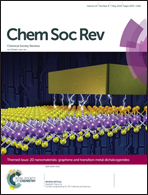Chemical synthesis of two-dimensional atomic crystals, heterostructures and superlattices
Abstract
Two-dimensional atomic crystals (2DACs) have attracted intense recent interest. With a nearly perfect crystalline structure and dangling-bond free surface, these atomically thin materials have emerged as a new material platform for fundamental materials science and diverse technology opportunities at the limit of single atom thickness. Over the past decade, a wide range of 2DACs has been prepared by mechanically exfoliating bulk layered crystals, which has fueled the rapid progress of the entire field in terms of fundamental physics and basic device demonstrations. However, studies to date are largely limited to mechanically exfoliated flakes, which are clearly not scalable for practical applications. The chemical synthesis of these materials has been lagging far behind fundamental property investigations or novel device demonstrations, which limits further progress of the field. To explore the full potential of 2DACs requires a robust synthesis of these atomically thin materials and scalable construction of complex heterostructures with designed spatial modulation of chemical compositions and electronic structures. The extreme aspect ratio and highly delicate nature of the atomically thin crystals pose a significant synthetic challenge beyond traditional bulk crystals and have motivated considerable efforts worldwide. Here we will review the recent advances, challenges and future perspective of the chemical synthesis of 2DACs, heterostructures and superlattices.

- This article is part of the themed collection: 2D nanomaterials: graphene and transition metal dichalcogenides


 Please wait while we load your content...
Please wait while we load your content...